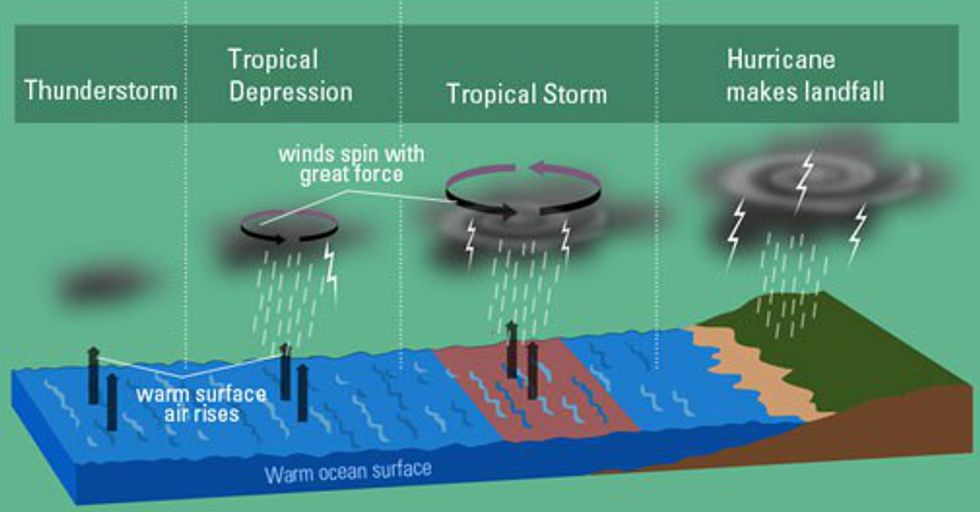Well I have tried to research this topic several times and all I can find are discussions about either seeding it with silver iodine crystals or dropping a bomb into the storm. The crystal seeding has issues beyond efficacy. And the bomb idea does not drain energy but adds energy to the storm. And the bomb would have to be BIG. So... back to my original premise. What if we slowed or even stopped the up draft of warm air? I'm not talking about blowing out the hurricane. I'm thinking of knocking the engine driving the hurricane from a V8 to a V6.Very cost prohibitive - and I believe someone looked into this a looooong time ago.
Cost prohibitive? Maybe, I'll confess that I have not done a rigourous analysis but liquid nitrogen can be purchased for about $1/liter
reference:
(Price of Liquid Nitrogen - The Physics Factbook.)
So 100,000 liters = 26,417 gallons (I just pulled that number out of my arse but it seems big) would cost ~$100,000. Lets assume I'm clueless (I am) and the scale needed to be 5 times 100,000 liters and then double that for operational costs and you have a price tag of $1million.
Go crazy and assume my scale is not even close and scale by 1000x more and you are just now at a price tag of $1 billion. The estimated cost of Katrina was $125 Billion. I still think the insurance companies would be happy to foot the bill for any hurricane expected to make landfall on a major city even if all we accomplished was knocking a catagory 5 to a catagory 1. I can even imagine many countries pitching in to make one western-hemispher hurrican-busting fleet of planes (or drones) for this purpose. I just wouldn't want to be a ship under those clouds when all that moist air suddenly drops 50 degrees.
For the nerds... a typical hurricane generates 5.1E19 Joules/day or 2.13E18 J/hr
reference

How much energy in a hurricane, a volcano, and an earthquake?
How much energy in a hurricane, a volcano, and an earthquake?
The enthalpy of vaporization of liquid nitrogen is 199,200 J/Kg. The heat capacity of gaseous nitrogen is temperatue dependent but it is approx ~1100 J/Kg-C. The boiling point of liquid nitrogen is 77K (-196C). So a Kg of liquid nitrogen evaporating and then warming to room temperature (~25C) absorbs 442,300 Joules of heat energy.
If you assume the process of dumping liquid nitrogen into a hurricane would take an hour and you wanted to absorb half of the energy creation of the hurricane in that hour you would need 2,408 billion Kg. Okay that is a LOT but I don't think you will need that much. When a Kg of liquid N2 evaporates and warms, its volume expands to ~872 liters so you can expect a sudden high pressure zone to form where the eye of the hurricane once was. I think if we could knock even 10% of the energy out of the updraft we could affect the destructive power (no math here just a gut check). At worst I think we could nudge its trajectory.
I personally don't have the resources to test my theories..




